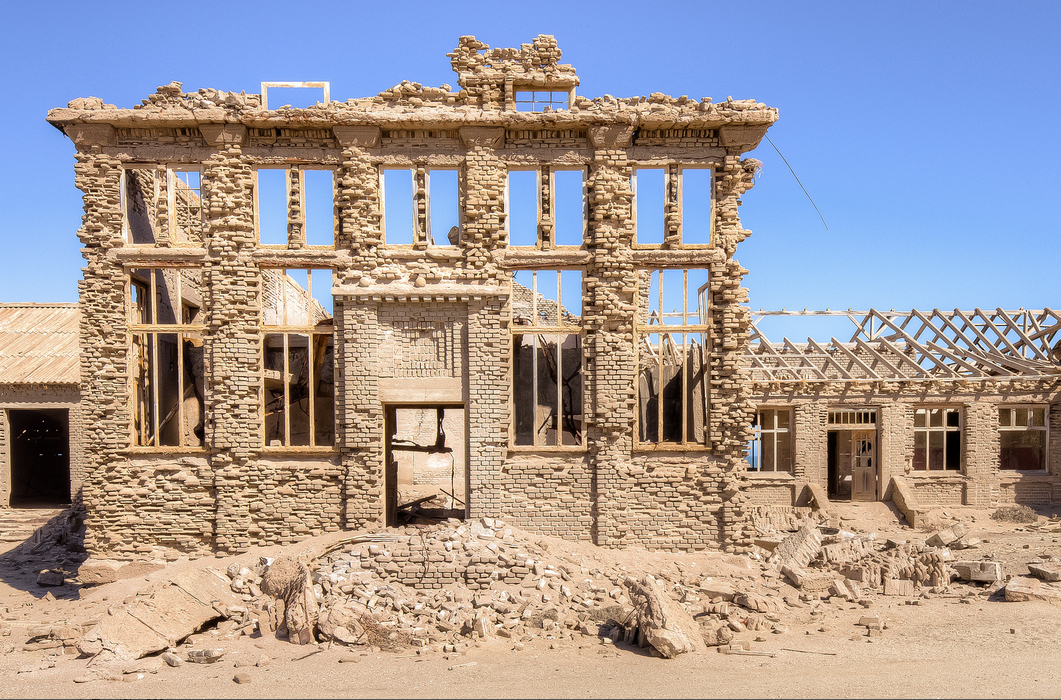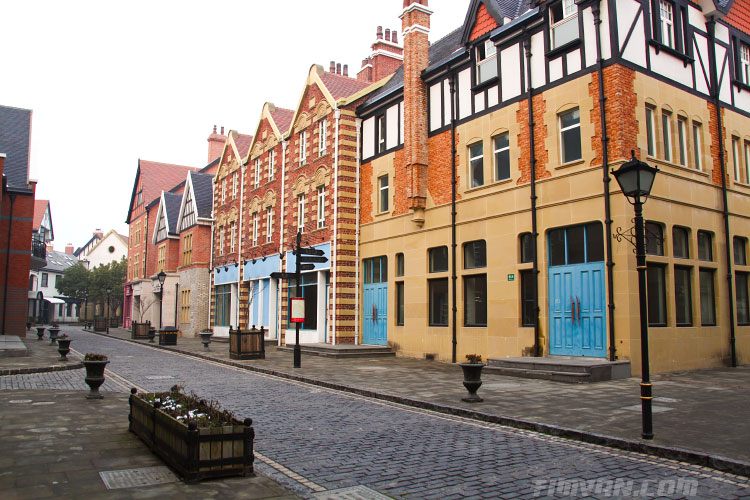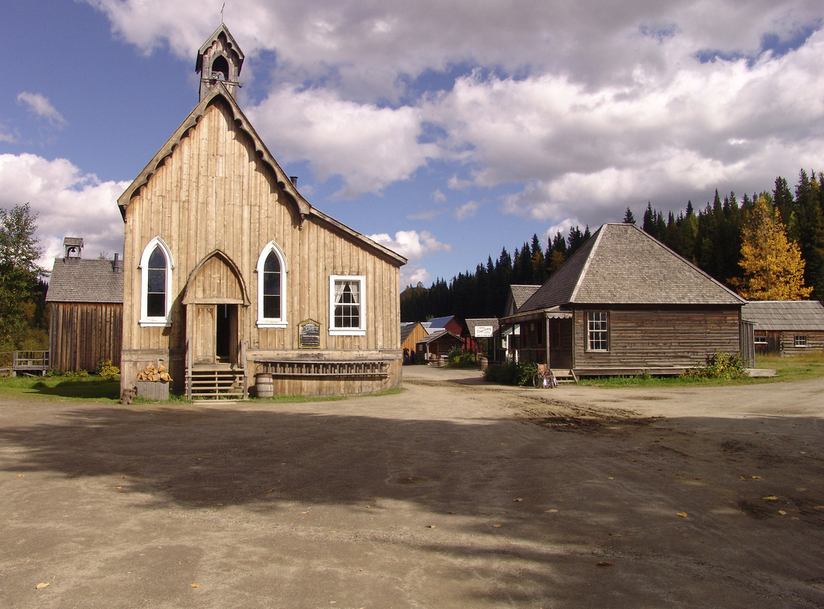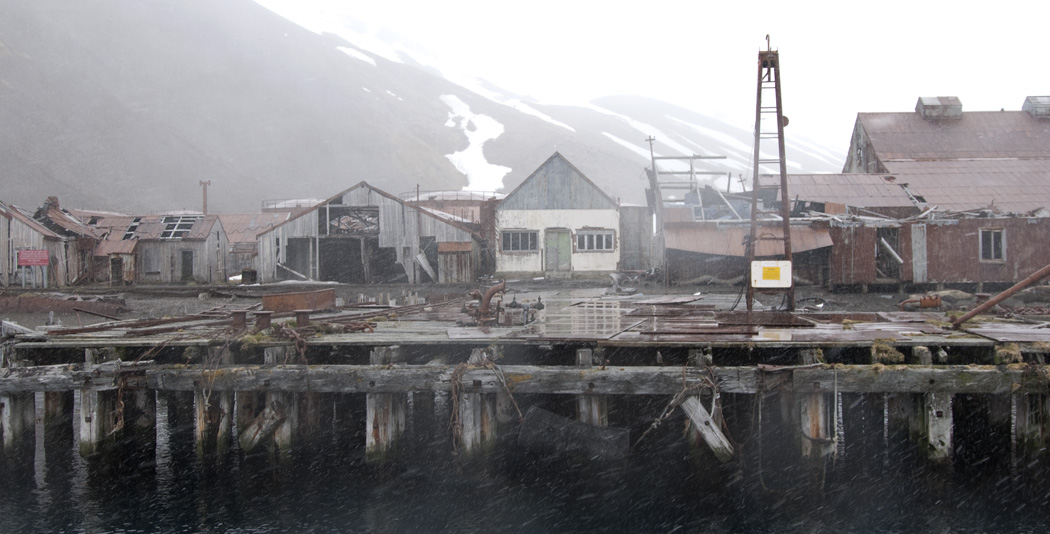Listed: Hauschka's Abandoned Cities | reviews, news & interviews
Listed: Hauschka's Abandoned Cities
Listed: Hauschka's Abandoned Cities
Experimental musician describes the abandoned cities that inspired his elegiac new album

Hauschka is a musician and composer from Düsseldorf, performing in what has been dubbed a "post-classical" vein, although he also has many fans in the electronica scene. His new album Abandoned City, written and performed almost entirely on a treated piano, was inspired by the idea of cities that are no longer, or never were, inhabited. It is full of approriately elegiac beauty. Here he introduces the different cities with a paragraph about each.
Elizabeth Bay
A mining town in southern Namibia. It was formerly considered a ghost town. Elizabeth Bay in on the coast of Namibia, 25 km south of Lüderitz.Diamonds were first discovered in the region around 1908; however, it wasn't until 1989 that the government of Namibia spent $53 million on the exploration and creation of a new diamond mine on the site.The mine stopped being operational sometime around 1998. By 2000, the town was considered a ghost town. Photograph by Douglas Discover

Pripyat
An abandoned city in northern Ukraine, near the border with Belarus. Named for the nearby Pripyat River, Pripyat was founded on 4 February 1970, the ninth nuclear city in the Soviet Union, for the Chernobyl Nuclear Power Plant. It was officially proclaimed a city in 1979, and had grown to a population of 49,360 before being evacuated a few days after the 1986 Chernobyl disaster. Photograph by Ben Fairless
Thames Town
The English name for a new town in Songjiang District, about 18 miles from central Shanghai, China. It is named after the River Thames in London. Thames Town was completed in 2006, occupying an area of one square kilometre and designed for a population of 10,000. It cost 5 billion yuan to construct. Photograph by Timothy Vanhonacker

Agdam
Also, Ağdam and Aghdam .A ghost town in the southwestern part of Azerbaijan. In July 1993, after heavy fighting, Agdam was captured by the forces of the Nagorno Karabakh Republic during its summer offensives. As the town fell, its entire population were forced to flee eastwards. Photograph by Marco Fieber

Sanzhi Pod City
A set of abandoned pod-shaped buildings in Sanzhi District, New Taipei City, Taiwan. The buildings resembled Futuro houses, some examples of which can be found elsewhere in Taiwan. The site where the buildings were located was owned by Hung Kuo Group. Photograph by Cypherone

Craco
An abandoned commune and medieval village located in the region of Basilicata and the Province of Matera in Italy. About 25 milesinland from the Gulf of Taranto at the instep of the “boot” of Italy. It is typical of the hill towns of the region with mildly undulating shapes. The lands surrounding it are sown with wheat. It was abandoned in 1963 due to recurring earthquakes.

Barkerville
The main town of the Cariboo Gold Rush in British Columbia, Canada. Preserved as a historic town, it is located on the north slope of the Cariboo Plateau near the Cariboo Mountains 50 miles east of Quesnel along BC Highway 26, which follows the route of the original access to Barkerville, the Cariboo Wagon Road. Photograph by Paul Brett

Stromness
A former whaling station on the northern coast of South Georgia Island in the South Atlantic. It was the destination of Ernest Shackleton's rescue journey in 1916. It is the central of three harbours in the west side of Stromness Bay. The name "Fridtjof Nansen" or Nansen appeared for this harbour on some early charts, but since about 1920 the name Stromness has been consistently used. The name comes from the town of that name in Orkney, UK.

- Hauschka is on tour in the UK from 10 to 16 May. He appears at the Brighton Festival on 13 May and has a special show at the Union Chapel in London in September.
- Listen to Abandoned City
Overleaf: Hauschka introduces the project on video
The future of Arts Journalism
You can stop theartsdesk.com closing!
We urgently need financing to survive. Our fundraising drive has thus far raised £49,000 but we need to reach £100,000 or we will be forced to close. Please contribute here: https://gofund.me/c3f6033d
And if you can forward this information to anyone who might assist, we’d be grateful.

Subscribe to theartsdesk.com
Thank you for continuing to read our work on theartsdesk.com. For unlimited access to every article in its entirety, including our archive of more than 15,000 pieces, we're asking for £5 per month or £40 per year. We feel it's a very good deal, and hope you do too.
To take a subscription now simply click here.
And if you're looking for that extra gift for a friend or family member, why not treat them to a theartsdesk.com gift subscription?
more New music
 'The Art of Loving': Olivia Dean's vulnerable and intimate second album
Neo soul Londoner's new release outgrows her debut
'The Art of Loving': Olivia Dean's vulnerable and intimate second album
Neo soul Londoner's new release outgrows her debut
 Music Reissues Weekly: The Peanut Butter Conspiracy - The Most Up Till Now
Definitive box-set celebration of the Sixties California hippie-pop band
Music Reissues Weekly: The Peanut Butter Conspiracy - The Most Up Till Now
Definitive box-set celebration of the Sixties California hippie-pop band
 Doja Cat's 'Vie' starts well but soon tails off
While it contains a few goodies, much of the US star's latest album lacks oomph
Doja Cat's 'Vie' starts well but soon tails off
While it contains a few goodies, much of the US star's latest album lacks oomph
 Mariah Carey is still 'Here for It All' after an eight-year break
Schmaltz aplenty but also stunning musicianship from the enduring diva
Mariah Carey is still 'Here for It All' after an eight-year break
Schmaltz aplenty but also stunning musicianship from the enduring diva
 Album: Solar Eyes - Live Freaky! Die Freaky!
Psychedelic indie dance music with a twinkle in its eye
Album: Solar Eyes - Live Freaky! Die Freaky!
Psychedelic indie dance music with a twinkle in its eye
 Album: Night Tapes - portals//polarities
Estonian-voiced, London-based electro-popsters' debut album marks them as one to watch for
Album: Night Tapes - portals//polarities
Estonian-voiced, London-based electro-popsters' debut album marks them as one to watch for
 Album: Mulatu Astatke - Mulatu Plays Mulatu
An album full of life, coinciding with a 'farewell tour'
Album: Mulatu Astatke - Mulatu Plays Mulatu
An album full of life, coinciding with a 'farewell tour'
 Music Reissues Weekly: Sly and the Family Stone - The First Family: Live At Winchester Cathedral 1967
Must-have, first-ever release of the earliest document of the legendary soul outfit
Music Reissues Weekly: Sly and the Family Stone - The First Family: Live At Winchester Cathedral 1967
Must-have, first-ever release of the earliest document of the legendary soul outfit
 Album: Robert Plant - Saving Grace
Mellow delight from former Zep lead
Album: Robert Plant - Saving Grace
Mellow delight from former Zep lead
 Brìghde Chaimbeul, Round Chapel review - enchantment in East London
Inscrutable purveyor of experimental Celtic music summons creepiness and intensity
Brìghde Chaimbeul, Round Chapel review - enchantment in East London
Inscrutable purveyor of experimental Celtic music summons creepiness and intensity
 Album: NewDad - Altar
The hard-gigging trio yearns for old Ireland – and blasts music biz exploitation
Album: NewDad - Altar
The hard-gigging trio yearns for old Ireland – and blasts music biz exploitation
 First Person: Musician ALA.NI on how thoughts of empire and reparation influenced a song
She usually sings about affairs of the heart - 'TIEF' is different, explains the star
First Person: Musician ALA.NI on how thoughts of empire and reparation influenced a song
She usually sings about affairs of the heart - 'TIEF' is different, explains the star

Add comment